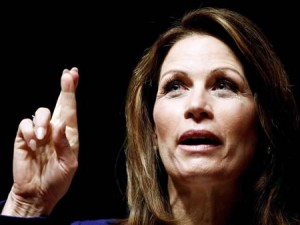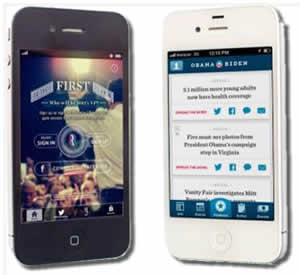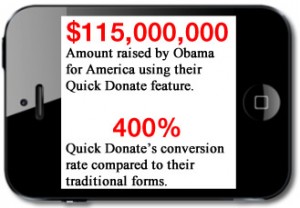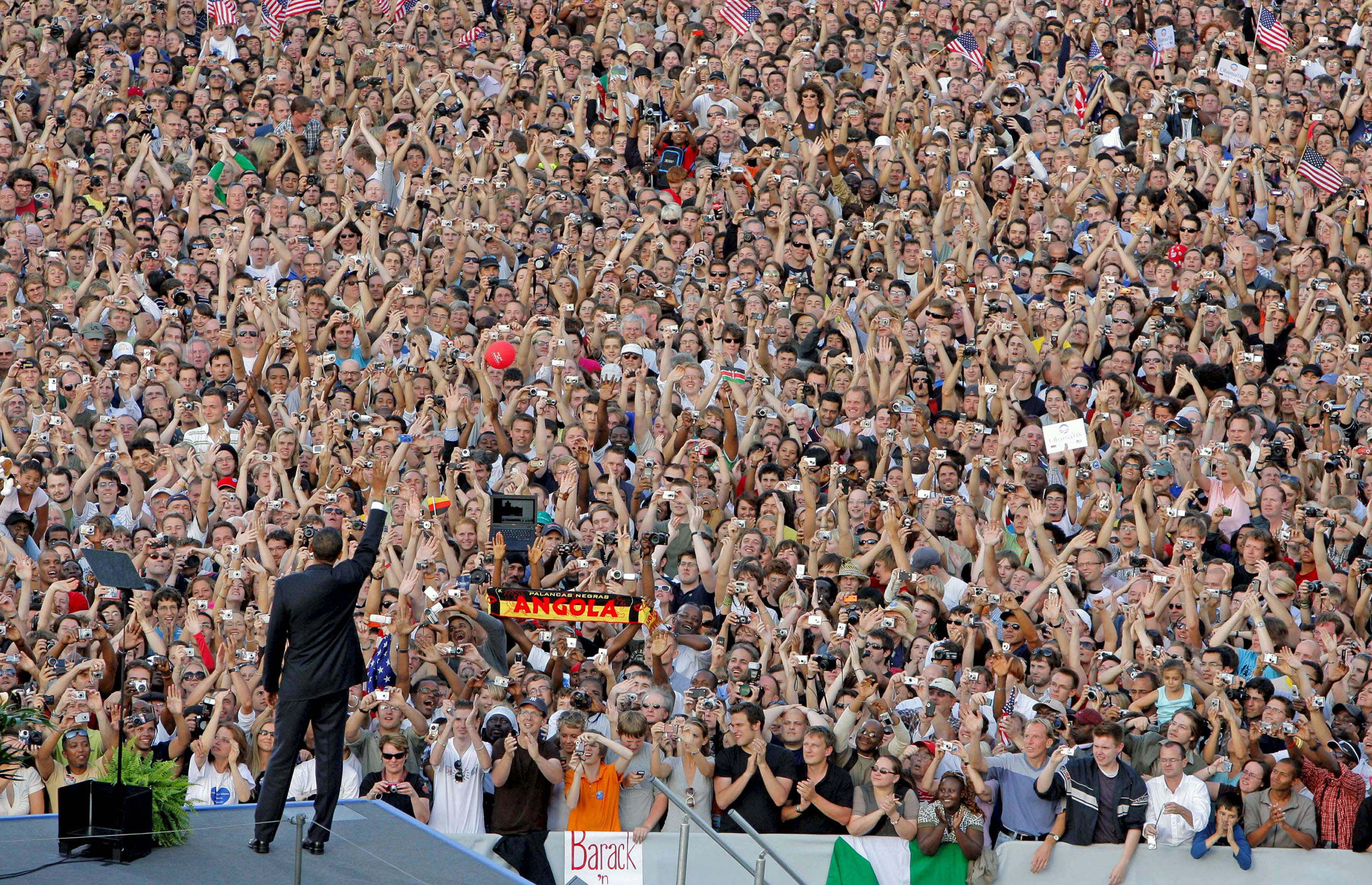I’ve always marveled at how few politicians and candidates actually connect with the people they serve, and especially their supporters. Whether it’s explaining a key vote that might not be so popular or a simple moment of joy, being genuine is often less important than being “on message.”
Many are more comfortable speaking to the media than speaking to the people who put them in office.
Senator Al Franken is one of those rare exceptions. Whether you voted for him or otherwise, he’s never shied away from connecting on a human level.
Nor has he been afraid to make part of his personal life public. Case in point is the brief email below (which was nicely optimized for my mobile phone):

Congratulations on becoming a grandpa, Senator Franken.

Both sides of the media aisle lit up on Wednesday after Congresswoman Michele Bachmann announced that she wouldn’t seek re-election. As a Minnesotan who’s closely watched her rise to office—often firsthand, I’m honestly glad to see her leave public office, and curious to see where she’ll land.
As a political consultant, I’m with the comedians and editorial cartoonists–I’ll be sorry to see her go.
Since her announcement, most of the accolades, criticisms and comedic pans at Michele Bachmann the public official or the candidate overlook some of her greatest strengths: she was an innovative campaigner and fundraiser.
Unlike many candidates, Bachmann never allowed her political consultants to suffer from path dependence—a psychological habit that puts faith in prior experience and past successes even when conditions have obviously changed. Like an entrepreneur, she sought out the opportunities and tools that often weren’t even applied in business, let alone the political world.
Her insatiable hunger for power required her to push technology when other campaigns were still struggling with the telegraph.
That drive helped her directly raise over $35.4 million over her political career—largely from small donors. It also helped her attack opponents well beyond their radar and competency to fight back…at a fraction of the cost of traditional media.
In 2006, the largely unknown Bachmann first used interactive tools—heavy banner advertising combined aggressive email efforts focused list building via third-party acquisition. She bested her better-known opponent by over 8 points.
After narrowing winning re-election by 3 points in 2008, Bachmann joined Twitter and Facebook. She eventually built a following of over 240,000 and 500,000 respectively. And years before many of her colleagues and detractors would post photos of them kissing babies, she incorporated video to cut funding for ACORN, surveyed supporters for talking points and actively converted Facebook “likes” into millions of donations.
During the 2010 mid-terms, her campaign first experimented with mobile. They used geo-targeted mobile ads during the Minnesota State Fair that painted her opponent as someone who “raise taxes on your corn dog and your deep-fried bacon and your beer.” She won by a generous 12.7 point spread.
And in the 2012 GOP Presidential Primaries, Bachmann pulled out all of the stops. They leveraged mobile web sites, SMS, Facebook mobile ads, social media and tightly geo-targeting mobile campaigns throughout Iowa and New Hampshire. The efforts earned her a win at the Iowa Straw Polls, and tactic adoption by the Romney campaign.
Eventually, Bachmann’s innovative efforts exceeded her capacity as a candidate—which might be a first in political campaigns. (Hadn’t that have happened, the political strategist in me would’ve savored the magic a Bachmann presidential would have created with access to $100s of millions.)
Instead of downplaying Bachmann the public official, political operatives would do better to learn from her as a campaigner. Her fellow tea partier Senator Ted Cruz did, but he’s an exception even on both sides of the aisle.
Like every mid-term, 2014 will be tougher campaign year for the party in power. Candidates should leverage innovative tactics that she’s proven effective.
-Curt Prins
If you don’t know who Ted Cruz is, you’re about to. Last weekend, Sen. Cruz (R-TX) gave the keynote address at the annual Conservative Political Action Conference (CPAC), and walked away with 16,000 of the most conservative political activists in the country.
Here’s how:
With one simple request, the senator invited these activists spread his message and amassed a powerful list to support his leadership PAC: Jobs Growth & Freedom Fund. After repeating his call-to-action, the senator’s Facebook and Twitter page included. Within 24 hours, the SMS list over 17,000.
What can we learn from this?
- Most Speeches Are Forgettable: Of the thousands of people that heard his speech on-site or online, few people will remember exactly what he said. Using speeches is an effective platform for building your mobile list and remaining connected to your supporters.
- Nothing Beats Personal Ask: There many ways to invite people to opt in to your mobile list, such as email, campaign collateral and social media. But nothing will beat person-to-person requests.
- Keep Keywords Simple: Sen. Cruz is the common word and is call-to-action to make it memorable and easy to answer. He could have used his name, but people could have easily misspelled it.
- Repeat Repeat Repeat: While not everyone can speak at national events like CPAC, repeating a call to action for social media and other tools can extend the return.
- Don’t Botch the Opt-in Reply: One mistake Sen. Cruz did make is sending a lackluster message to all those who opted in. The candidate should have sent the link to his PAC or requested further information from the subscribers like their zip code.
Please Note: This is the third of a three-part series analyzing the full spectrum of mobile tools used by both presidential campaigns.
In Part 3, we will review how both campaigns leveraged mobile apps and text messaging..
Mobile Apps:
Like most of corporate America, both presidential campaigns became a little delusional with the potential of mobile apps. User retention trends tell a different story. According to research from Localytics, more than 40% of all mobile apps downloaded are use less than three times. If you’re lucky, your app is one of the 31% that’s open more than 11 times over a nine-month period.
Given the expense and time of developing mobile apps, their short shelf life and the promotional budget required to get them downloaded, these tools are not the answer for most campaigns (and companies for that matter). That said, both campaigns created their own and prove that point.
Romney did its best to update and Obama tactic from 2008. The campaign announced that it would be naming Romney’s running mate via a mobile app. That drove nearly 200,000 downloads in the first 48 hours. The campaign spent a sizable portion of their mobile advertising budget to drive further downloads. In the end, the media scooped the Paul Ryan choice, the campaign sent out an SMS first, and then the app pushed the announcement two days after it was old news. Following that debacle, future updates to the app were limited to social media integration, RSVPing for events and collecting donations – which was merely a link to a mobile webpage.
Obama’s mobile app fared better. Campaign actually released two apps: the first was little different than Romney’s attempt, but the second supported their field efforts. Users could register voters, join volunteer teams locally and even canvass their voters from the comfort of their own smart phone. The app was integrated with the campaign’s CRM and Google Maps to highlight potential voters within the volunteers’ area. With approval, it could even search through the user’s address book to find matches with their CRM. The field app was limited to smart phones and didn’t have a tablet implementation – a tragic mistake given the dramatic usage growth of tablets.
Mobile Messaging:
The popularity of SMS as mobile marketing tool certainly faded as others evolved. That said, text messaging still remain the most effective and cost-effective mobile marketing tool; just not the flashiest.
Unlike apps or mobile ads, 90% of mobile phones can accept SMS – a certain ubiquity. Text messaging volume continues to grow double digits year-over-year, especially with youth and voters of color who average over 50 text messages a day. And SMS open rates exceed 90%, which is nearly 10 times that of political e-mail messages.
Since its first use in 2008, SMS tools have advanced dramatically. Campaigns can now survey their supporters, set up peer-to-peer list building efforts and even engage in a one-to-one dialogues via SMS. Text messaging is the most effective way to get up-to-date information to supporters and send out GOTV reminders. Peer-reviewed research has shown that when used successfully, SMS reminders can increase the number of voters heading to the polls by 3 to 5% at costs that are less 10% that call banking.
Yet both campaigns fail to use mobile messaging effectively in 2012.
SMS didn’t even appear as a tool for the Romney campaign. Visitors to his websites had to dig into the fine print to find the opt-in information. Though their app offered an easy way for volunteers to opt-in, SMS subscribers across the country received little more than event updates and follow-ups e-mail campaigns.
In 2008, Obama built an SMS list of over 3 million, but let that list collect dust after his inauguration. His messaging innovations during his first election failed to follow to his reelection. Like Romney, Invitations to sign up for use SMS list were well hidden and never appeared in any political promotions either online, in print or in broadcast media, and SMS were used as reminders for prior e-mail campaigns.
Final Takeaways:
Both campaigns failed to use mobile apps and mobile messaging effectively, so here’s what we can learn:
- Most apps suck: While Obama’s field app had decent capabilities, the amount of time and effort that goes into developing a mobile app rarely provide adequate ROI for campaigns. Advocacy organizations could graduate to apps once they successfully use other mobile tools and understands their users’ needs.
- Don’t overlook SMS: While it might not be as flashy as other mobile tools, text messaging has ubiquity, advanced capabilities and is a must to any mobile marketing mix.
Please Note: This is the second of a three-part series analyzing the full spectrum of mobile tools used by both presidential campaigns.
In Part 2, we will review how both campaigns leveraged mobile advertising and fundraising.
Mobile Advertising:
Spending on mobile phone advertising is exploding. Industry spent more than $1.8 billion on mobile ads in 2011. A year later that number grew to $5 billion worldwide.
Like their desktop brethren, mobile advertising provides exceptional targeting capabilities. In 2012, Google’s AdWords platform allowed campaigns to even target by congressional district. Most platforms offered geo-fencing – which limits ads to a set radius, and geo-targeting by zip codes. Both campaigns took notice.
Obama used mobile video ads in Spanish to target Latino voters. His campaign placed ads on mobile games such as Scrabble, Tetris and many others. And smart use of mobile advertising helped the campaign reverse their funk after the first debate. We also found that fundraising tied to mobile advertising campaigns generate 60% more donations than their desktop equivalents.
Romney’s mobile advertising habits began at the Iowa Caucus and New Hampshire primaries. His campaign spent more on mobile ads appeared on Facebook, Apple’s iAD platform and Google’s AdMob. And they effectively leveraged it to boost app downloads and recruit volunteers using click-to-call to connect them with the nearest campaign office. Their biggest mistake though was that they did not increase their mobile budgets to maintain their lead coming out of the first debate.
Mobile Fundraising:
Money drives campaigns, and 2012 proved to be the most expensive presidential campaign ever: both campaigns raise a combined total of $2 billion. Mobile had a significant impact both campaigns fundraising efforts.
Obama raises over billion dollars ($726M directly) of which 55% came from small donors – those who gave less than $200 during the election cycle. One in ten of their online donations came from mobile. The campaign experimented with using Square for smartphone credit card processing and Text2Give for impulse donations with little success.

Their Quick Donate feature proved to be one of their most effective tools. Past donors who saved their credit card information and provided a mobile phone number received simple donation requests via SMS. The donor would simply have to reply the number, such as 50, and in the system would process a $50 donation from them. This tool was timed to key events to maximize the effect.
The Romney campaign was less successful in this realm. While they released over 5,000 Square readers at the national convention, the program results whenever released – a sure sign of a campaign disappointment. While the campaign raised $992 million ($467 million directly), less than 24% came from small donors. When users clicked donate on the Romney mobile app, they were routed to mobile site instead of processing the donation within the app.
Takeaways:
Since mobile advertising is often directly tied to fundraising, both campaigns provided us with a few lessons:
- Do your best to remove all barriers: Obama was Quick Donate feature did not require filling out a lengthy form on a smartphone to donate, and drove impulse donations.
- Technology without strategy typically fails: Both campaigns used Square and Text2Give without a full understanding of how best they could be applied, and their efforts proved disappointing.
- Mobile is scalable: After the first debates, Obama ramped up his mobile efforts when they proved effective and he needed it most while Romney maintained spending levels regardless of whether he was ahead or behind.
In Part 3, we will review how both campaigns used mobile apps and messaging.




